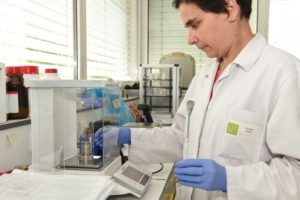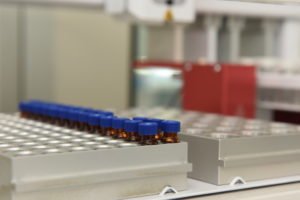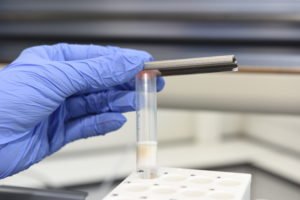R&D, is one of the pillars of La Drôme Laboratoire
The Research & Development department continually develops new analytical methods to adapt to regulations and customer requests and to improve our analysis processes. This service works in close collaboration with the various technical teams of the laboratory. It aims to develop new methods for the analysis of new molecules with new techniques, while refining the limits of quantification.
Our accreditation, in flexible scope, by COFRAC gives us the opportunity to rapidly implement these new methods developed.
La Drôme Laboratoire listen to you to accompany you in your projects
La Drôme Laboratoire provides research and development skills for its customers. All the works carried out within the framework of a R & D project are eligible for the CIR (Research Tax Credit)
Different collaborative approaches are possible:
- Contract delivery for industrialists with support for analytical development
- Collaborative innovation with partners around an idea, a concept, a market
- Collaboration in a R & D program for the assembly of national projects as with the ANR (National Agency for Research) or international with the H2020 program
If you wish to develop an R & D project in partnership with the laboratory, we will carry out a feasibility study. A summary defining the theoretical and practical estimates of the achievement is then written. At the end of the testing and analysis phase, we publish a comprehensive study report. An accreditation can be validated if the project falls within our flexible scope of accreditation.
La Drôme Laboratoire, innovate and be a precursor
La Drôme laboratoire has been a forerunner in the development of multi-residue analysis techniques and in the discovery of pollution.
An R & D partnership with the companies BIOMAE, IRSTEA and La Drôme Laboratoire has enabled the development of a new technology for assessing the contamination of a watercourse. Gammars (crustaceans) are used as biosensors of water quality. They are exposed in a stream and then analyzed. Their use makes it possible to evaluate:
- Chemical contamination of a watercourse (metal concentrations, organic micro-pollutants)
- Toxicity of watercourses (ecotoxicological effects such as survival, feeding and reproduction)
This “gammares” matrix is being studied at the national level at the legislative level in addition to the “fish” matrix.



